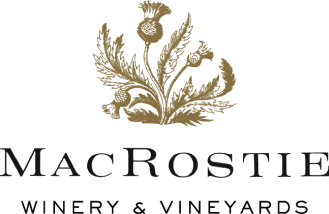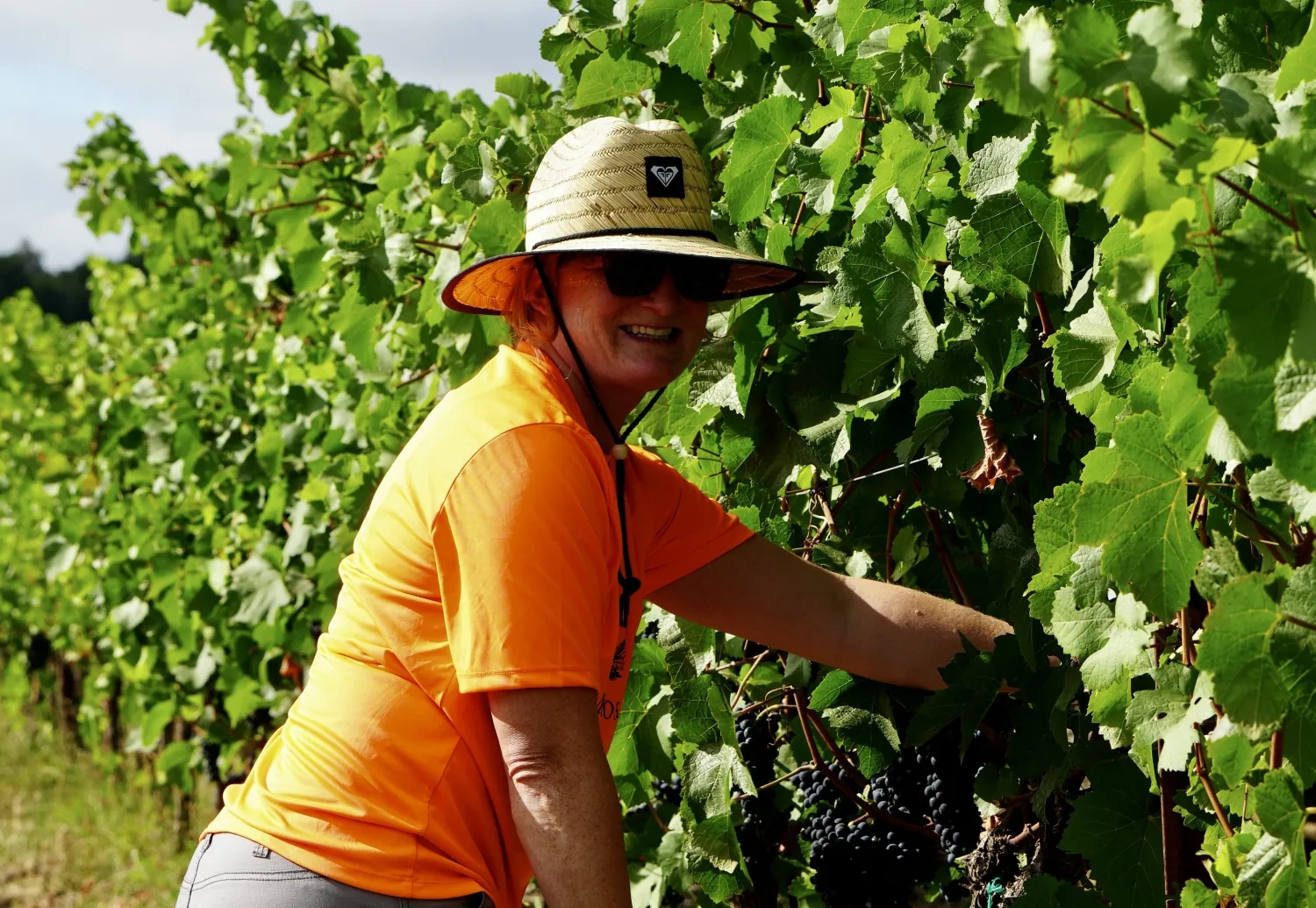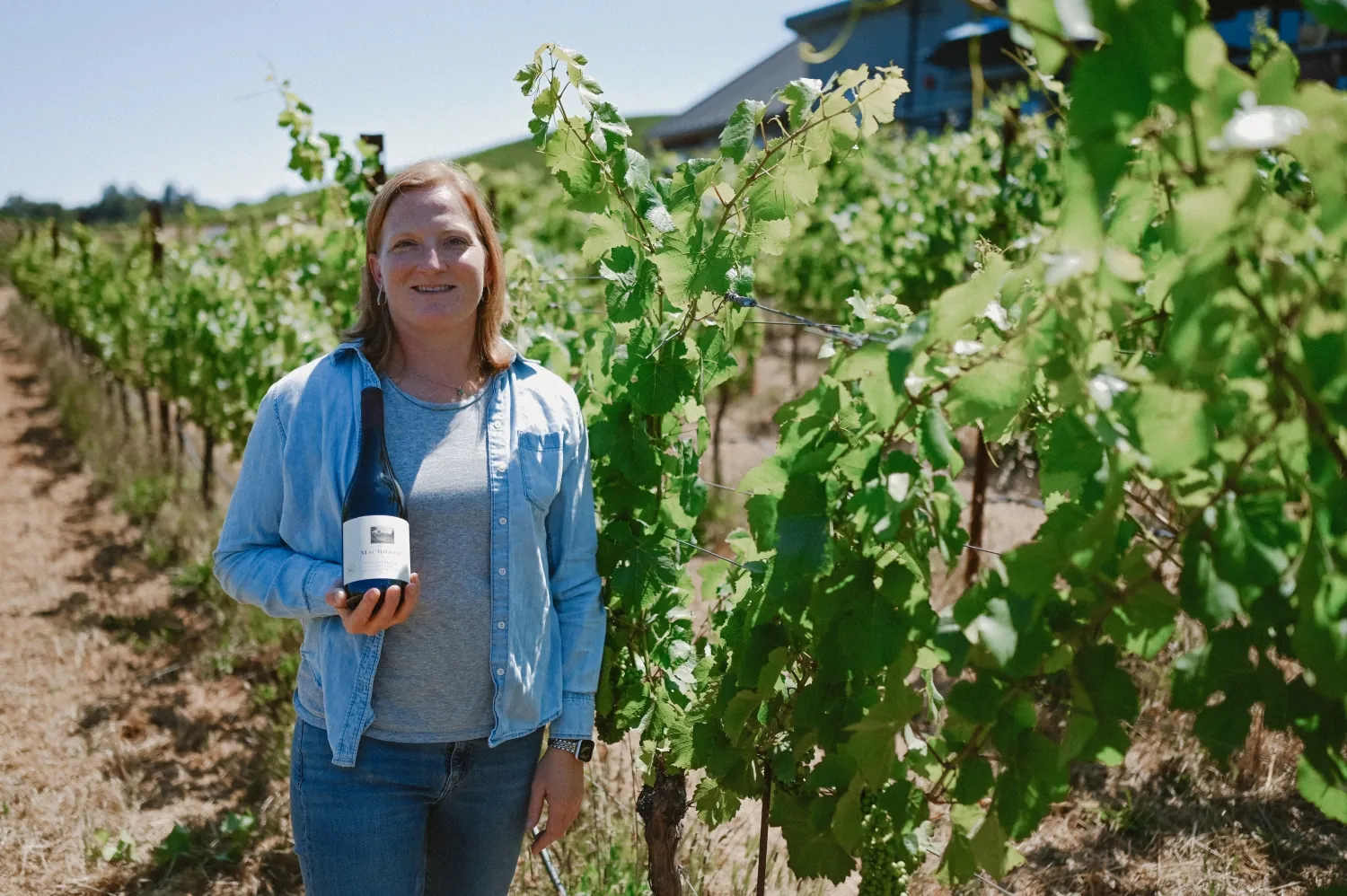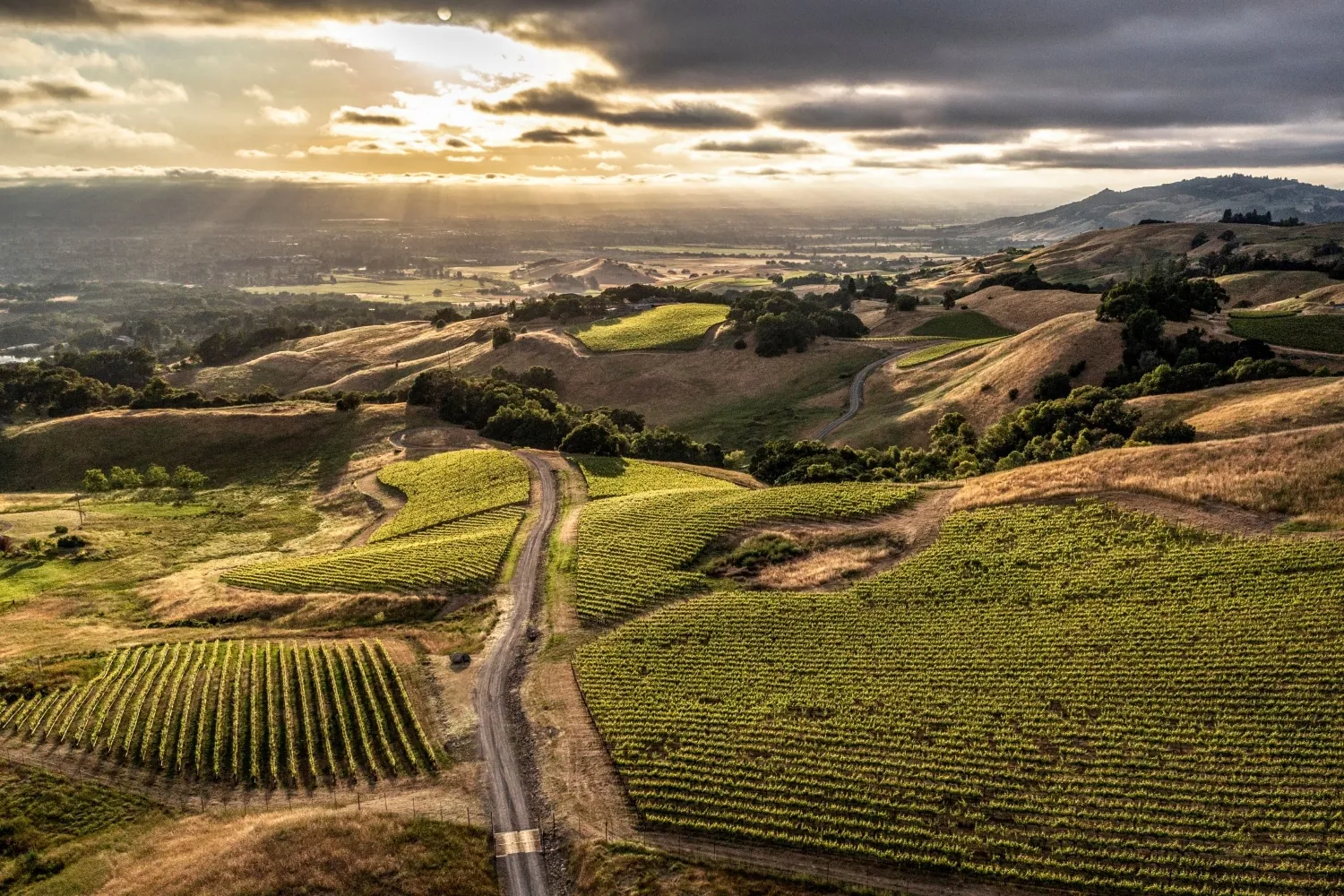Our roots at Wildcat Mountain Vineyard run deep. In 1997, while helping his son with a high school science project about soil types, our founder, pioneering Sonoma Coast vintner Steve MacRostie, discovered an ideal section of unplanted pastureland that would one day become Wildcat Mountain Vineyard. As Steve and his son discussed the site’s spartan volcanic soils, Steve noted Wildcat’s elevation and mountain terroir, and the way the wind and fog raced off the Petaluma Gap cooling the land. While we don’t know how his son did on his soil project, we do know that Steve’s visit planted a seed that would grow into one of the best Sonoma Coast vineyards and the source for some of MacRostie’s most acclaimed wines.
Eighteen Blocks, One Bold Vision
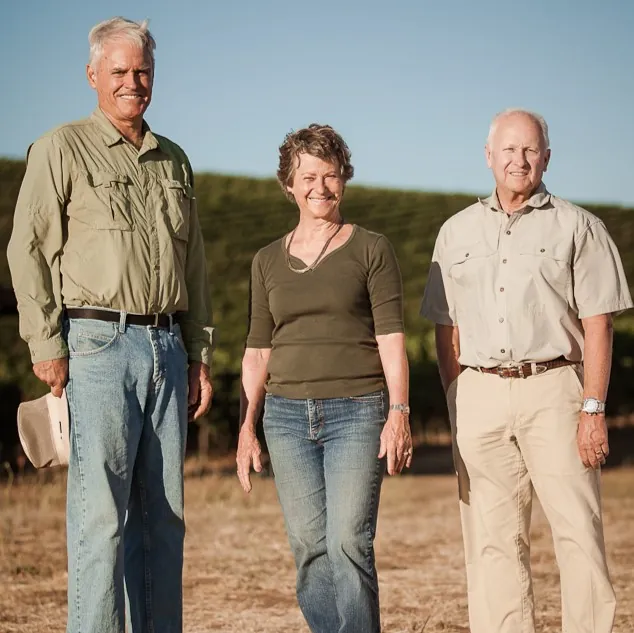 Eager to cultivate his own great piece of land and believing that the site had near limitless potential for producing extraordinary cool-climate Chardonnay and Pinot Noir, Steve (right) approached the land’s owners, ranchers Tony and Nancy Lilly (left and center), and formed a partnership to develop the land into Wildcat Mountain Vineyard. After meticulously evaluating the site and thoughtfully selecting early ripening rootstocks and a diversity of his favorite clones, Steve began the careful planting of 58 acres of Chardonnay, Pinot Noir, and Syrah vines in 1998. In keeping with the natural topography of the site, the plantings were designed as 18 different vineyard blocks spread across five fields, with a variety of elevations, exposures, and soils.
Eager to cultivate his own great piece of land and believing that the site had near limitless potential for producing extraordinary cool-climate Chardonnay and Pinot Noir, Steve (right) approached the land’s owners, ranchers Tony and Nancy Lilly (left and center), and formed a partnership to develop the land into Wildcat Mountain Vineyard. After meticulously evaluating the site and thoughtfully selecting early ripening rootstocks and a diversity of his favorite clones, Steve began the careful planting of 58 acres of Chardonnay, Pinot Noir, and Syrah vines in 1998. In keeping with the natural topography of the site, the plantings were designed as 18 different vineyard blocks spread across five fields, with a variety of elevations, exposures, and soils.
Volcanic Soils, Relentless Winds, Exceptional Wines
Located in the remote western borderlands between Carneros and the Sonoma Coast and on the edge of the cool Petaluma Gap AVA, Wildcat Mountain Vineyard offers a unique composition of well-draining shallow, volcanic soils over fractured andesite, with elevations ranging from 500 to 700 feet. Adding to its appeal for producing exceptional cool-climate varieties, the vineyard enjoys regular morning fog, followed by afternoon sun, with cooling breezes that thicken the grape skins. As a result, Wildcat Mountain Vineyard has a very long growing season that allows the fruit to achieve optimal ripeness, with excellent acidity, and structure.
“I felt Wildcat would push the envelope,” said Steve. “The cooler climate, the stressful site, the thinner soils; it was not a safe place to set up a farming operation. From a business sense it was probably rather stupid but from a winemaking standpoint it felt bold and right. Often, we’re not above the fog or below it, we’re in it. And if it’s not the fog, it’s the wind. The vines are literally bent back by the force of wind off the bay, running up the mountain and pummeling the vines like a boxer with too much confidence.”
First Bottling to Lasting Legacy
In 2001, Steve made MacRostie’s very first vineyard-designate Chardonnay using grapes from Wildcat Mountain Vineyard, as well as a vineyard-designate Pinot Noir. Even in the vineyard’s youth, the wines from Wildcat were fascinating and quickly earned a reputation for their depth and structure, as well as their intricate and exotic expression of terroir. More than two decades later, the sustainably certified vineyard is recognized as the source for some of the best Sonoma Coast wines.
Precision Farming, World-Class Results
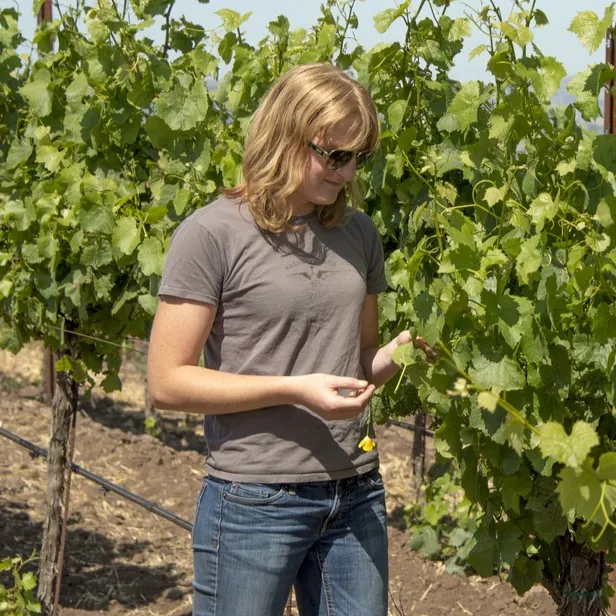 Since being named MacRostie’s winemaker in 2013, Heidi Bridenhagen has further cemented Wildcat’s reputation as a grand cru-caliber vineyard, with its wines consistently earning rave reviews and 90+ point scores. Heidi has also used fruit from Wildcat to craft MacRostie’s coveted Single-Barrel wines and as part of the winery’s pinnacle, The Loch and The Key bottlings. At the same time, Wildcat has become a sought-after grape source for such noted wineries as Talisman, Fulcrum, Bannister, and others. “Great vineyards have something unique and special to offer,” said Heidi. “I love the wines from Wildcat. The Chardonnays are distinctive and fascinating, with exceptional structure, sophisticated minerality, cool-climate nerve and signature honey and spice notes, while the Pinot Noirs deliver sumptuous color, weight, and black fruit character with robust tannins and a remarkable intensity of flavor.”
Since being named MacRostie’s winemaker in 2013, Heidi Bridenhagen has further cemented Wildcat’s reputation as a grand cru-caliber vineyard, with its wines consistently earning rave reviews and 90+ point scores. Heidi has also used fruit from Wildcat to craft MacRostie’s coveted Single-Barrel wines and as part of the winery’s pinnacle, The Loch and The Key bottlings. At the same time, Wildcat has become a sought-after grape source for such noted wineries as Talisman, Fulcrum, Bannister, and others. “Great vineyards have something unique and special to offer,” said Heidi. “I love the wines from Wildcat. The Chardonnays are distinctive and fascinating, with exceptional structure, sophisticated minerality, cool-climate nerve and signature honey and spice notes, while the Pinot Noirs deliver sumptuous color, weight, and black fruit character with robust tannins and a remarkable intensity of flavor.”
Reflecting Heidi’s small-lot approach to winemaking, the vineyard team prunes each block of Wildcat Mountain Vineyard separately and at different times, using strategies specifically designed to meet the needs of each section. This includes targeted irrigation methods tailored to each block, with the vines allowed to maintain a moderate amount of stress. “When it comes to best Sonoma Coast and Petaluma Gap vineyards, it’s often the most challenging sites that yield the most spectacular wines, and that’s Wildcat in a nutshell,” added Heidi. “Challenges build character. From the thin soils to the buffeting winds, the vines are forced to struggle, producing small yields of thick-skinned grapes that are incredibly interesting and complex. When I drink a wine from Wildcat, it’s like I’m transported to the vineyard.”



